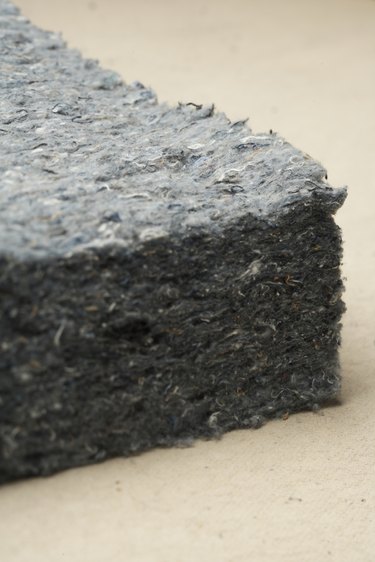
A range hood can remove smoke and smells from a kitchen, venting them to the outdoors. Poor initial installation or various small critters living in your walls can damage the insulation around the vent pipe, causing air drafts back through the hood. Time also can be a factor, as insulation can become brittle and degrade after a number of years. For most projects, replacement insulation can be put in place just by taking down the hood and working from inside. A trip to the attic may be necessary if the vent pipe goes to the top of the home.
Step 1
Identify the location where the range hood's vent reaches the outdoors. This most likely is behind the hood itself, but may be in a cabinet above the range or in the attic.
Video of the Day
Step 2
Disconnect the electrical supply and unscrew the hood from its mounting if the vent is accessible behind the hood. Several screws may be holding the unit in place at the rear, sides or top. Alternatively, work in a location where you can reach the pipe; for example, position yourself near the pipe where it exits the roof.
Step 3
Spray foaming insulation around the vent pipe where it exits the wall or roof. Direct the foam in a circular pattern around the pipe and go around the object several times to build it up. Foaming insulation fills all small gaps; it is not necessary to remove previous insulators.
Step 4
Reinstall the range hood, if it was removed. Reconnect the electrical supply.
Tip
Caulk around the vent on the outside of the home to prevent weather damage to the insulation inside.
Clean the range hood's damper to remove grease and particles. A damper that cannot shut all the way may allow outside air to blow in through the vent, causing a draft that is not related to insulation issues.
Video of the Day